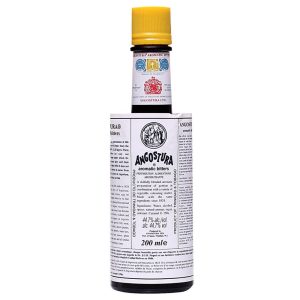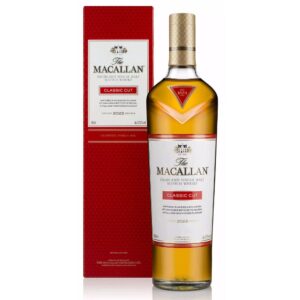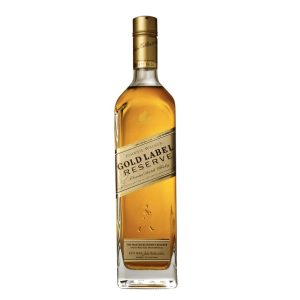Whiskey, a spirit known for its depth, complexity, and rich heritage, owes much of its character to the barrels in which it ages. While American and European oaks have long been the standard in whiskey aging, Mizunara oak, native to Japan, has emerged as a distinctive and revered option. This unique wood not only contributes to the global diversity of whiskey but also carries with it a deep connection to Japanese tradition and craftsmanship. In this article, we explore the revival of Mizunara oak in whiskey aging, delving into its history, the unique flavors it imparts, and its growing significance in the world of premium whiskey.
The Origins of Mizunara Oak
Mizunara oak (Quercus mongolica) is a species of oak native to Japan, known for its challenging growth patterns and the intricate care required to craft it into barrels. The word “Mizunara” combines “mizu,” meaning water, and “nara,” meaning oak, which is fitting given the wood’s high moisture content. Mizunara oak trees are slow-growing and can take up to 200 years to mature, making them both rare and highly valued.
The use of Mizunara oak in whiskey aging began during World War II, when Japan faced shortages of imported European and American oak barrels. As a result, Japanese distillers turned to native Mizunara oak as an alternative. However, the wood’s high moisture content and porous structure posed significant challenges, often leading to leakage and difficulties in crafting barrels that would withstand the aging process. Despite these challenges, the unique characteristics of Mizunara-aged whiskey soon became apparent, setting it apart from other oak-aged spirits.
The Unique Characteristics of Mizunara-Aged Whiskey
One of the most distinctive aspects of Mizunara oak is the unique flavor profile it imparts to whiskey. Unlike American and European oaks, which often contribute notes of vanilla, caramel, and spice, Mizunara oak is known for its subtle yet complex flavors, which are deeply rooted in Japanese culture and tradition.
Aromatic Complexity
Whiskeys aged in Mizunara oak barrels are celebrated for their aromatic complexity. Commonly described as having notes of sandalwood, coconut, and oriental spices, these aromas are often associated with traditional Japanese incense used in temples and religious ceremonies. The wood’s porous nature allows the whiskey to interact more deeply with the environment, enhancing these distinctive aromatic qualities.
Floral and Fruity Notes
In addition to its unique aromatic profile, Mizunara oak imparts delicate floral and fruity notes to the whiskey. Hints of cherry blossom, honey, and dried fruit are commonly found in Mizunara-aged whiskeys, adding layers of complexity that evolve over time. These flavors are often subtle, revealing themselves gradually as the whiskey matures, making each sip a journey of discovery.
Long, Lingering Finish
Another hallmark of Mizunara-aged whiskey is its long, lingering finish. The tannins in Mizunara oak are less aggressive than those found in other oaks, resulting in a smoother, more refined mouthfeel. The finish is often described as elegant and persistent, with a gentle warmth that resonates long after the whiskey is sipped.
The Challenges of Working with Mizunara Oak
Despite its desirable flavor contributions, Mizunara oak presents significant challenges to distillers. The wood’s high moisture content and porous nature make it prone to leakage, requiring skilled craftsmanship to construct barrels that can withstand the aging process. Additionally, the slow growth of Mizunara oak means that the trees must be carefully managed, with only mature trees being harvested to ensure sustainability.
Craftsmanship and Patience
The process of crafting Mizunara oak barrels is both labor-intensive and time-consuming. Cooperages must take great care in selecting the wood, which often involves air-drying the staves for several years to reduce moisture content before the barrels can be assembled. The barrels must then be meticulously constructed to minimize leakage, with coopers employing traditional techniques passed down through generations.
This level of craftsmanship and patience adds to the exclusivity and cost of Mizunara-aged whiskeys. However, for many distillers and whiskey enthusiasts, the results are well worth the effort, as the unique flavors and aromas imparted by Mizunara oak cannot be replicated by other woods.
The Revival of Mizunara Oak in Modern Whiskey
In recent years, there has been a resurgence of interest in Mizunara oak, driven by both Japanese distillers and international whiskey producers. This revival can be attributed to the growing appreciation for the unique qualities of Mizunara-aged whiskey, as well as the global demand for premium and rare spirits.
Japanese Distilleries Leading the Way
Japanese distilleries, such as Suntory and Nikka, have been at the forefront of the Mizunara revival. Suntory’s Yamazaki Distillery, for example, has released several limited-edition whiskeys aged in Mizunara oak, each of which has garnered critical acclaim for its depth and complexity. These whiskeys are highly sought after by collectors and connoisseurs, further cementing Mizunara’s reputation as a valuable and distinctive aging material.
International Interest
The appeal of Mizunara oak has also extended beyond Japan, with several international distilleries experimenting with Mizunara barrels to create new and innovative expressions. Scottish distilleries, in particular, have begun incorporating Mizunara-aged whiskey into their blends, adding a unique Japanese twist to traditional Scotch. The combination of Scottish craftsmanship and Japanese oak has resulted in intriguing new flavors that appeal to a global audience.

The Future of Mizunara-Aged Whiskey
As the global whiskey market continues to evolve, the demand for unique and exclusive spirits shows no signs of slowing down. Mizunara oak, with its rich history and distinctive characteristics, is poised to play an increasingly important role in the future of whiskey aging.
Sustainability and Conservation
One of the key challenges facing the continued use of Mizunara oak is sustainability. Given the wood’s slow growth and the increasing demand for Mizunara-aged whiskey, there is a risk of overharvesting if not carefully managed. To address this, Japanese distilleries and cooperages are investing in sustainable forestry practices, ensuring that Mizunara oak trees are responsibly harvested and that new trees are planted to replace those that are used.
Innovation and Experimentation
The revival of Mizunara oak also opens the door to further innovation and experimentation in whiskey aging. As distillers continue to explore the potential of this unique wood, we can expect to see new and exciting expressions that push the boundaries of flavor and complexity. Whether through extended aging, hybrid barrels, or creative finishing techniques, Mizunara-aged whiskey is likely to remain a key focus for both traditional and modern whiskey producers.
Conclusion
The revival of Mizunara oak in whiskey aging represents a celebration of tradition, craftsmanship, and innovation. Rooted in Japanese culture, Mizunara-aged whiskey offers a distinctive flavor profile that sets it apart from other spirits, making it highly sought after by connoisseurs and collectors alike. As distillers continue to embrace the unique qualities of Mizunara oak, this once-overlooked wood is now recognized as a valuable and revered component in the art of whiskey-making.
For whiskey enthusiasts, exploring Mizunara-aged expressions offers a journey into the heart of Japanese tradition and a taste of the extraordinary. As the global whiskey landscape continues to evolve, Mizunara oak stands as a testament to the enduring appeal of craftsmanship, patience, and the pursuit of excellence in every bottle.












